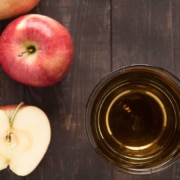Evaluation of Arsenic-Induced Intracytoplasmic Inclusions
Intracytoplasmic inclusions have been observed in various cell types in individuals exposed to high levels of inorganic arsenic in the drinking water or diet and have been classified as micronuclei. However, in our laboratory, we have observed identical types of inclusions in mice exposed to arsenicals and in patients treated with arsenic trioxide for promyelocytic leukemia, and have conclusively demonstrated that these are not micronuclei using electron microscopy and staining with DAPI, a chromosome specific stain. Similar to what has been reported in the literature as micronuclei in the epidemiology studies, the inclusions we observed stain positive with Giemsa, but this is a very non-specific stain. The purpose of this study is to obtain cells from individuals in epidemiology studies that have been exposed to high levels of inorganic arsenic in the drinking water and/or diet and to examine them in detail to determine whether they represent true micronuclei or if they are what we have identified as intracytoplasmic inclusions.
Institution: University of Nebraska Medical Center
Principal Investigator: Samuel Cohen, PhD
Years Awarded: 2014
Learn more about the IAFNS Food and Chemical Safety Committee.







